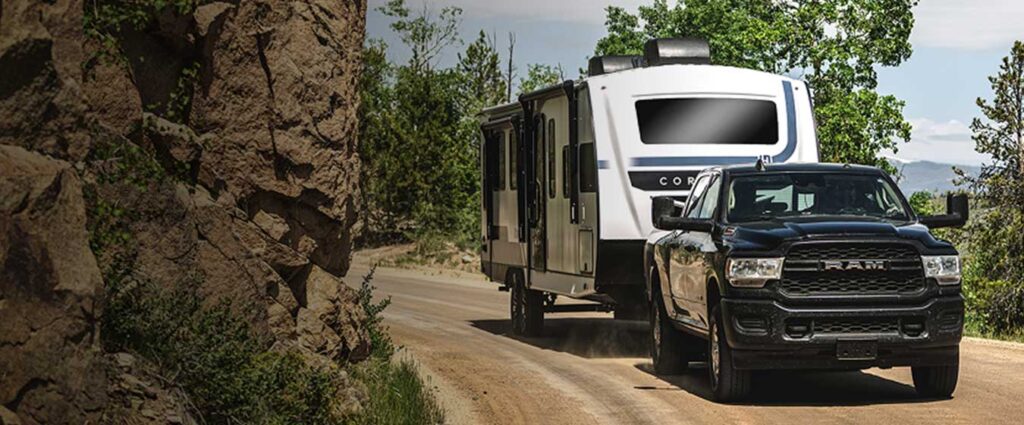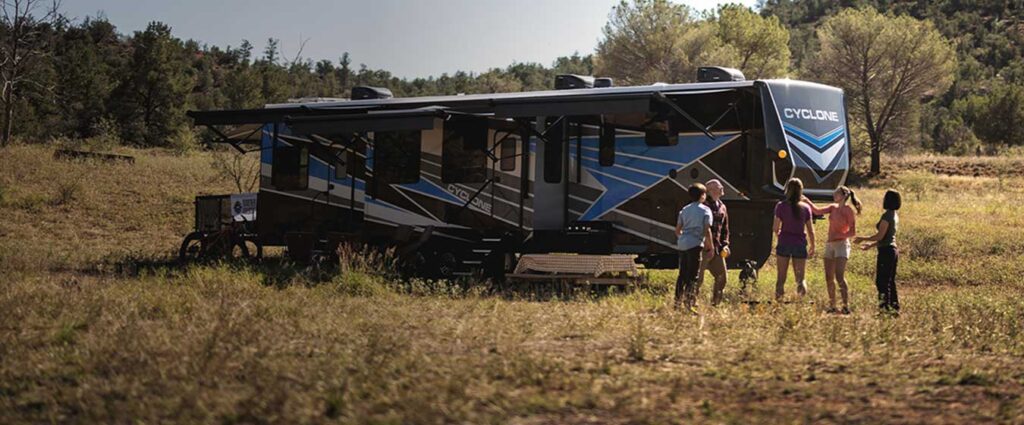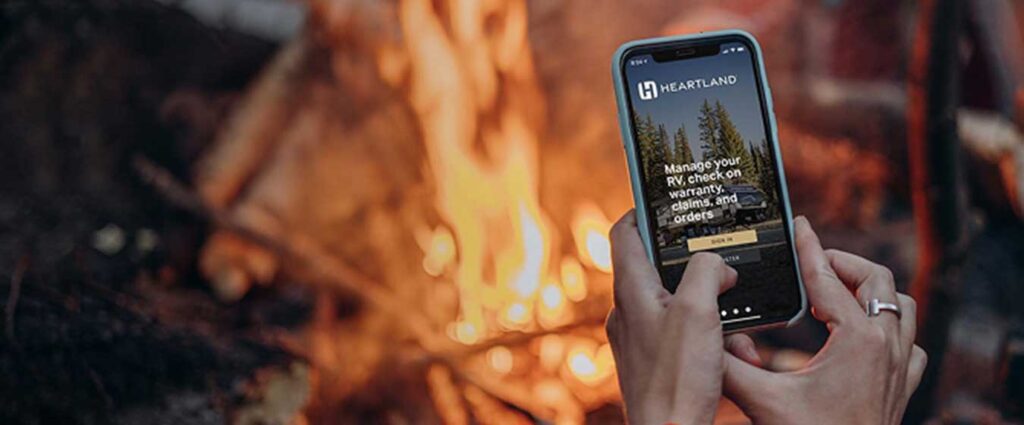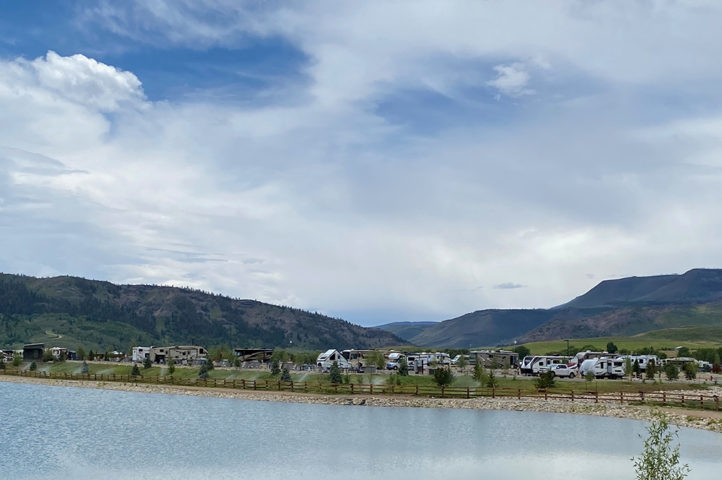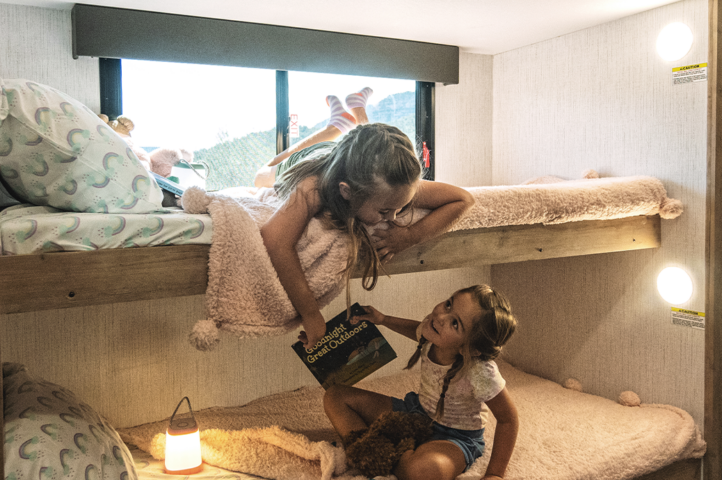Traveling for extended periods of time in an RV can be a dream come true for many people, including us. It has allowed us to travel the country, explore new places, meet so many people from all walks of life, and experience a truly unique lifestyle. However, making such a huge change can be a difficult and intimidating decision. It requires careful planning, preparation, and a willingness to embrace the challenges that come with this lifestyle. So, if you’re curious about what it takes to hit the road for months at a time, let’s take a look at some of the steps our family of five took to prepare while easing into extended RV travel.
Determine Your Budget
Before you can start planning your extended RVing adventure, you need to determine how much money you can afford to spend. Here are some things you’ll need to consider when creating your budget:
- The cost of the RV itself
- Ongoing monthly expenses such as fuel, maintenance, internet, and insurance
- Cost of living on the road, including food, entertainment, campsite fees, and other expenses
Downsize Your Belongings
Traveling in an RV extensively means you’ll need to downsize your belongings significantly. This is the most important and potentially the hardest part of making the transition. It can be overwhelming to think about everything you have to have and determine the items you can live without.
Take it room by room and only keep necessities. You won’t have as much storage space in a RV, so you’ll need to be selective about what you bring with you. My mindset was: “If I were going on a vacation to a cabin where nothing was provided but the cabin itself, what would I bring with me to get by?” This was especially useful when it came to downsizing the kitchen. Make a list in each room of what you absolutely cannot live without.
Choose the Right RV
There are so many different types of RVs to choose from, ranging from small camper vans to large motorhomes with all the bells and whistles. Consider the size of your family, the types of RV parks, state parks, or resorts you’d like to stay in, and your budget when choosing your RV. Some RV parks do have size restrictions, however, we personally haven’t encountered a park that couldn’t accommodate our Heartland Bighorn Traveler 39MB fifth wheel.
When we were shopping for an RV, we knew we wanted each of our three children to have a private space of their own, as well as a large living and kitchen space because we enjoy hosting meals and game/movie nights. We ended up choosing a mid-bunk floor plan fifth wheel and are still happy with our choice after over two years of extended travel.
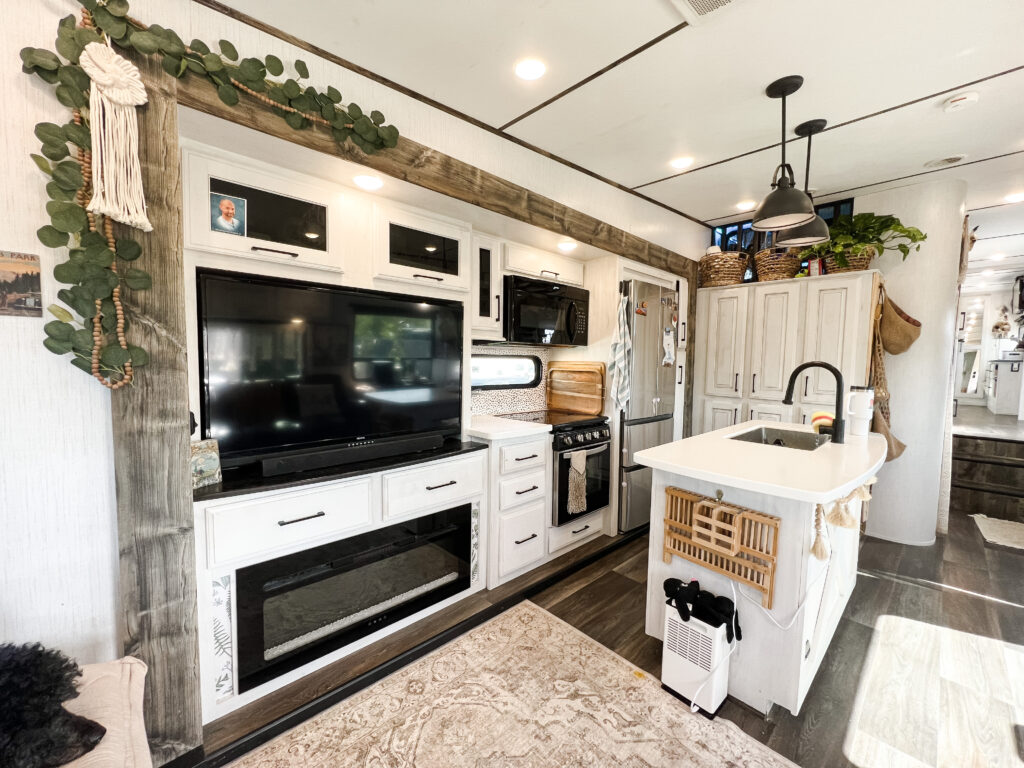
Prepare Your RV
Before you hit the road, you’ll need to prepare your RV. This may include installing solar panels so you can have the option to boondock, upgrading your battery system by adding an additional deep cycle battery (or switching to lithium batteries all together), and making sure your water and waste systems are in good working order.
Having a good water filtration system is incredibly important. We installed a three-stage filtration system on our RV so we could have peace of mind knowing that no matter where we get water from, it’s clean. Have an extra water hose and sewer hose on hand as well. Some campground utilities can be located at a far distance from your RV and you’ll need additional hoses to use as extensions.
You may also want to consider adding organizers and storage bins to optimize the functionality of the storage areas in your RV.
Tentatively Plan Your Route
One of the best things about RVing is the freedom to travel wherever you want, whenever you want and for however long you want. However, it’s still a good idea to plan your route ahead of time. This will help you avoid unexpected detours, find the best campsites and make the most of your time on the road.

Having a loose plan of the places you want to experience is helpful. Many parks out west have waitlists for reservations and you will need to think ahead to get on those lists. Boondocking (camping without water, sewer, or electric hook-ups) is a great option as well, but desirable locations near some national parks can sometimes be crowded. We work full time remotely, so we have to plan our route and stay around reliable wifi. All of these considerations are factored into our route, but we also make contingency plans that allow flexibility as we know plans can change spur of the moment.
Maintaining Traditional Schedules
When we decided to travel extensively in an RV, it was important to us to still maintain traditional daily schedules and establish routines to balance remote work, school and adventure. If you’re like us and were already homeschooling beforehand, then there may not be much of a transition in schooling. However if your family is new to roadschooling, there may be additional time needed to find a homeschooling program that works best for your children.
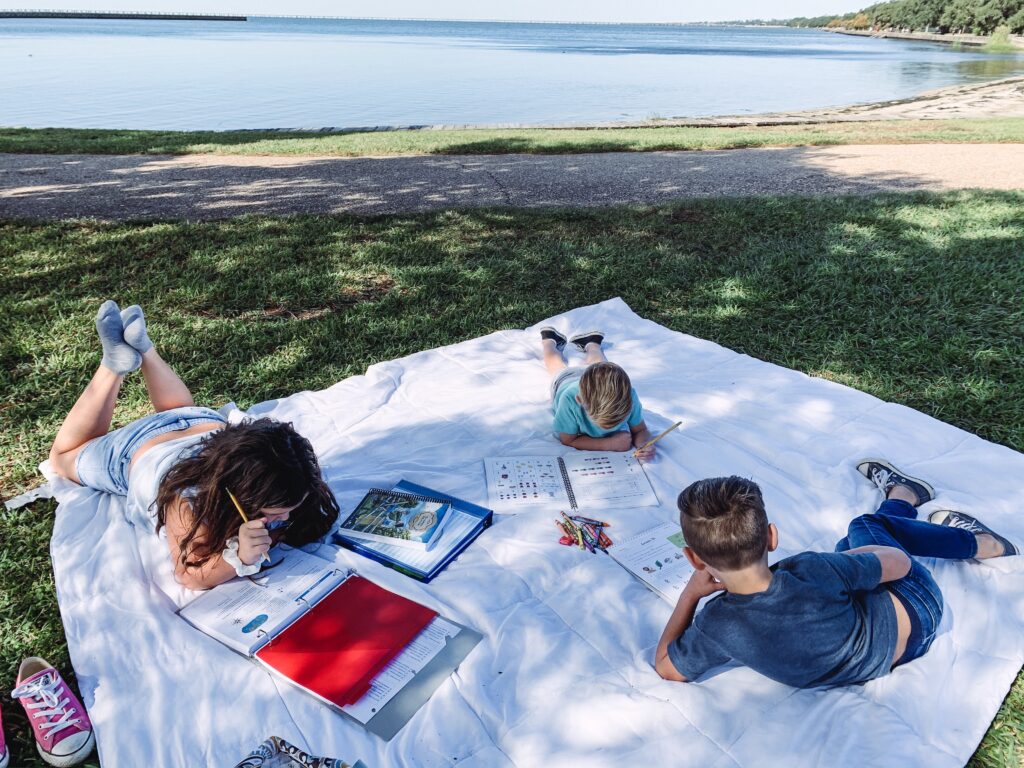
My husband and I still have to work remotely on a 9-5 schedule (depending on the time zone we are in). However, moving from place to place can be a lot of work on top of our day jobs. We established a routine/checklist for travel days so we could pack up quickly and efficiently. We make sure that each family member has their own jobs to do so that one person isn’t doing all the work, and in turn, this gets us on the road quicker.
Embrace the Lifestyle
To successfully embrace the extended RVing lifestyle, you need to have the right mindset. This means being open to new experiences, meeting new people and adapting to life on the road. While it may be challenging at times, with the right outlook, it can be a rewarding and unforgettable experience that gives you memories to last a lifetime!
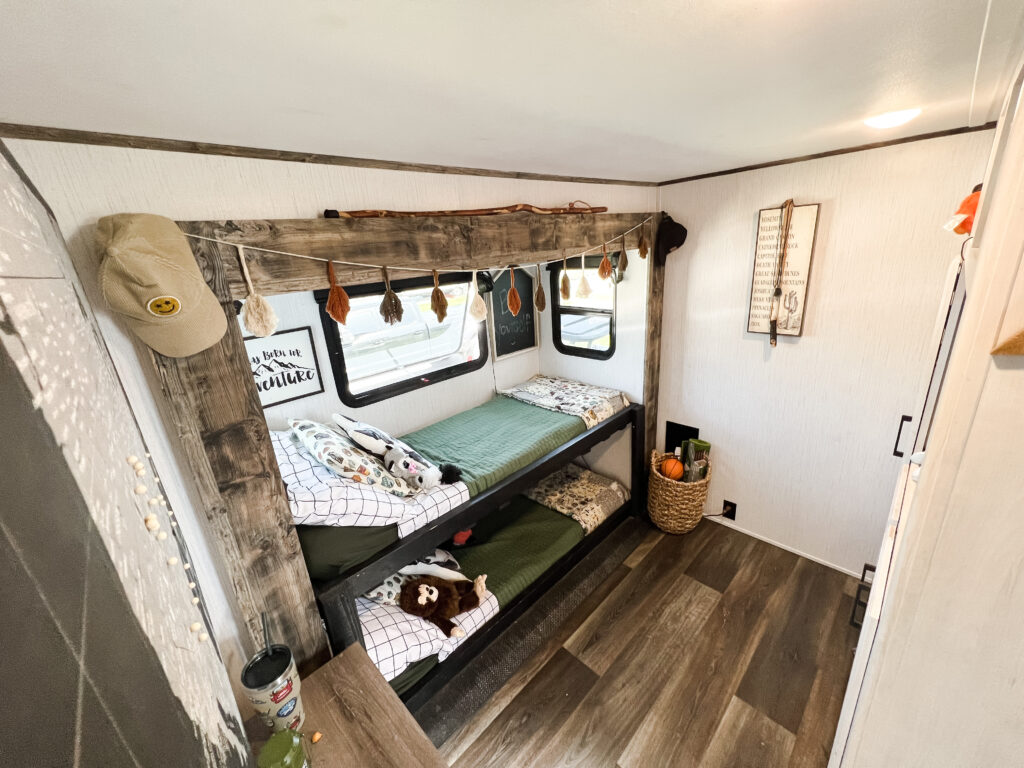
Darren and Amanda have been living and traveling in their Heartland Bighorn Traveler 39MB fifth wheel since June of 2021. They homeschool their three children Allianna, Dallas and Dawson, and thoroughly enjoy being able to show them the lessons they learn about in their textbooks. When they’re not homeschooling or working, you can find them chasing waterfalls in Tennessee and visiting family in Louisiana.
